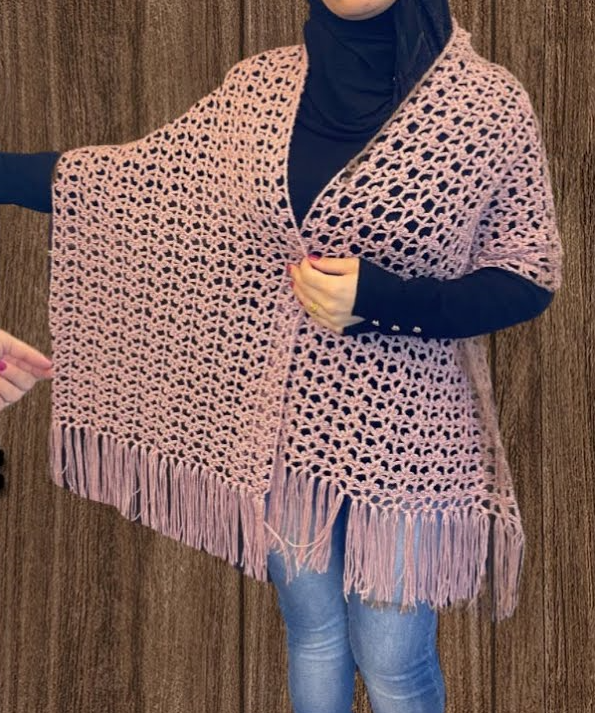What could be more elegant than a very warm shawl that you gracefully cross over your shoulders when you’re out and about, by a good wood fire, or on a waterside cruise?
Shawls are back in fashion and are traditionally worn over the shoulders or, possibly, around the waist in a Gypsy style.
Shawl production is traditionally made from wool, cotton or linen. But the prettiest, the softest and most beautiful to wear, are made of goat hair, like Orenbourg Shawls or Kashmiri shawls. Naturally, they are also the most expensive.
The resurgence and popularization of modern shawls comes from the French Revolution, when the upper middle class only talked about Kashmiri Shawls.
The French spinning mills in Lyons, Paris and Nîmes and the famous Baisley mill in England were able to compete with these productions thanks to modern techniques and especially the use of Jacquard looms.
Shawls have been successful for nearly three centuries

In the 17th and 18th centuries, shawls were obviously on trend and a much appreciated gift by the wives of the wealthy middle class or the easygoing nobility.
After the discovery of northern Indian shawls (Kashmir) and Persian fabrics, Europe voluptuously embraced this new fashion.
These shawls, and more generally all Indian fabrics, were highly appreciated by the Western world for their delicacy, the softness of the material, and the extraordinary variety of patterns the Indians produced.
The softness of Indian shawls was mainly due to the fact that they were made from an unknown material, the hair of a Tibetan goat.
Despite all attempts to produce goat hair in France, it was necessary to shut down the traditional wool industry in the end to try to produce shawls that could compete with Indian shawls in terms of quality.
These innovations and the people’s love of shawls caused an important development in the textile industry after the French revolution. For almost three centuries, it was a thriving industry that stalled in the 20th century.
Technology in the service of shawls
After a pause in the 20th century due to general economic impoverishment due to both European World Wars, the shawl knows a rate hike today. This is largely due to modern production techniques, which allow to significantly reduce costs by rationalizing production.
Undoubtedly, it comes from the practicality of the shawl in our modern age, which allows to quickly change clothes at a party or to cover/discover oneself easily and stylishly.
Beautiful shawls to suit all dress styles: casual, casual dressing gown, formal dress or flamboyant, there is always a choice to suit the occasion.
Shawl sizes usually range from 150×150 cm to 200×200 cm.
Where can you find some?
Quality Shawl is not available in every store. Therefore, if you really want to get one, it is preferable to turn to the Internet, where a search engine search should allow you to find the object of your sweet dreams.
Leave a reply











